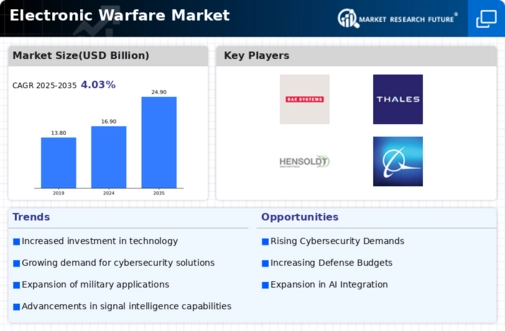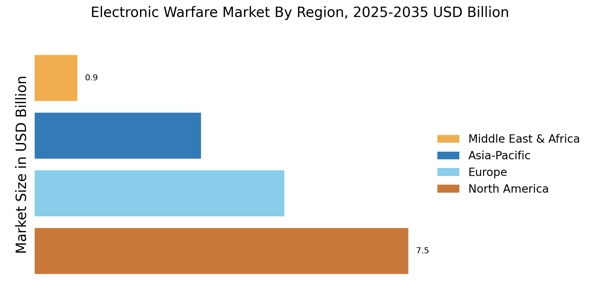Electronic Warfare Market Summary
As per MRFR analysis, the Electronic Warfare Market Size was estimated at 16.77 USD Billion in 2024. The Electronic Warfare industry is projected to grow from 17.45 USD Billion in 2025 to 25.9 USD Billion by 2035, exhibiting a compound annual growth rate (CAGR) of 4.03 during the forecast period 2025 - 2035.
Key Market Trends & Highlights
The Electronic Warfare Market is poised for substantial growth driven by technological advancements and geopolitical dynamics.
- The integration of Artificial Intelligence is transforming operational capabilities in the Electronic Warfare Market.
- North America remains the largest market, while the Asia-Pacific region is emerging as the fastest-growing area for electronic warfare solutions.
- The Electronic Support segment continues to dominate, whereas the Electronic Attack segment is witnessing rapid growth.
- Rising geopolitical tensions and increased military spending are key drivers propelling the market forward.
Market Size & Forecast
| 2024 Market Size | 16.77 (USD Billion) |
| 2035 Market Size | 25.9 (USD Billion) |
| CAGR (2025 - 2035) | 4.03% |
Major Players
Northrop Grumman (US), Raytheon Technologies (US), BAE Systems (GB), Lockheed Martin (US), Leonardo (IT), Thales Group (FR), General Dynamics (US), L3Harris Technologies (US), Hensoldt (DE)


















Leave a Comment